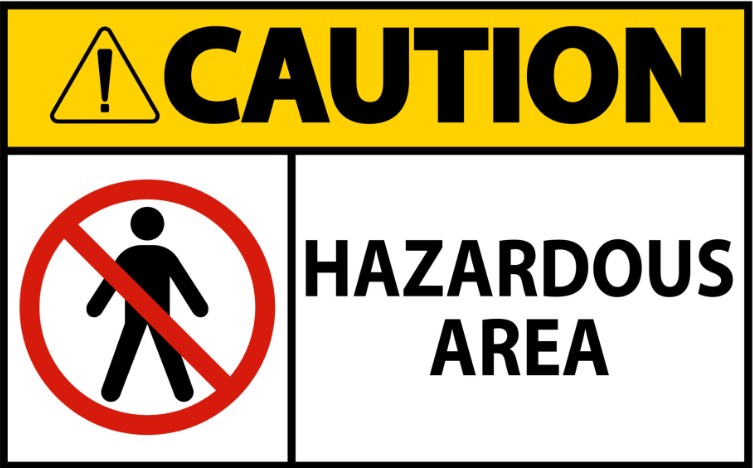Industries like oil and gas, chemical manufacturing, and mining operate in environments where explosive atmospheres are a critical concern. Proper classification of these zones, referred to as Explosive Zone Classification, is a fundamental step to ensuring the safety of personnel, equipment, and the environment. This article dives into the importance, process, and best practices for classifying explosive zones under international standards like ATEX and IECEx.
What Is Explosive Zone Classification?
Explosive zone classification is the process of identifying and categorizing areas where explosive atmospheres are likely to occur. An explosive atmosphere forms when flammable gases, vapors, mists, or combustible dusts mix with air and have the potential to ignite. Proper classification ensures that equipment used in these zones is designed and certified to minimize the risk of ignition, thereby safeguarding the workplace.
How Explosive Zones Are Classified
Under international standards like ATEX (Europe) and IECEx (global), zones are categorized based on the frequency and duration of explosive atmospheres:
- Zones for Gases, Vapors, and Mists:
– Zone 0: Explosive atmosphere is present continuously or for long periods. Example: Inside storage tanks containing flammable liquids.
– Zone 1: Explosive atmosphere is likely to occur during normal operations. Example: Areas around valve seals or pump gaskets.
– Zone 2: Explosive atmosphere is unlikely to occur but, if it does, will persist for a short period. Example: Areas surrounding Zone 1, such as walkways.
- Zones for Combustible Dusts:
– Zone 20: Combustible dust is present continuously or for long periods. Example: Inside silos or hoppers handling grain or powder.
– Zone 21: Combustible dust is likely to occur during normal operations. Example: Surroundings of dust collection systems.
– Zone 22: Combustible dust is unlikely to occur but persists briefly when it does. Example: Areas near equipment leaks or spillages.
Importance of Explosive Zone Classification
- Preventing Accidents: Proper classification reduces the likelihood of fires or explosions, protecting workers and assets.
- Compliance with Regulations: Standards such as ATEX, IECEx, and NEC enforce strict guidelines for hazardous zones.
- Selecting the Right Equipment: Zone classification helps in choosing explosion-proof or intrinsically safe equipment that matches the level of risk.
- Reducing Downtime: By proactively managing hazards, businesses avoid operational disruptions caused by accidents.
Steps for Conducting Explosive Zone Classification
- Identify Potential Hazards
– Conduct a thorough analysis of all materials and processes.
– Evaluate sources of flammable gases, vapors, mists, and dusts.
- Determine the Likelihood of Explosive Atmospheres
– Assess operational conditions that could lead to releases.
– Review historical incidents and near-misses.
- Define the Zones
– Use the criteria for Zone 0/1/2 or Zone 20/21/22 based on the type of hazard.
– Map these zones within the workplace to create a detailed hazardous area classification (HAC) drawing.
- Implement Safety Measures
– Install appropriate equipment and devices certified for use in specific zones.
– Develop maintenance schedules to ensure continued compliance.
- Review and Update Regularly
– Periodically reassess the zone classification when processes, materials, or layouts change.
Challenges in Explosive Zone Classification
– Misidentification of Hazards: Overlooking less obvious risks like hidden dust accumulations.
– Inadequate Expertise: Classification requires specialized knowledge of explosive atmospheres and regulatory standards.
– Failure to Monitor Changes: Operational or material changes may render existing classifications outdated.
Best Practices for Effective Explosive Zone Classification
– Engage Experts: Work with certified professionals to perform accurate classifications.
– Train Employees: Ensure workers understand hazardous zones and the precautions necessary to work safely.
– Leverage Technology: Use tools like gas detectors and simulation software for hazard analysis.
– Create a Safety Culture: Promote awareness and compliance with safety measures throughout the organization.
Standards and Regulations for Hazardous Zones
Globally recognized frameworks guide explosive zone classification:
– ATEX Directive (European Union): Applicable for explosive atmospheres in workplaces and equipment.
– IECEx System: International standards for equipment and services used in explosive atmospheres.
– NEC 500/505 (USA): Classification for hazardous areas in industrial settings.
Explosive zone classification is not just a regulatory requirement but a vital process to protect lives, assets, and the environment. By systematically identifying and mitigating risks in hazardous areas, organizations ensure safer operations and long-term sustainability.
If your workplace involves explosive atmospheres, contact us for expert guidance on accurate classification and compliance with safety standards. Let’s build a safer tomorrow together!


